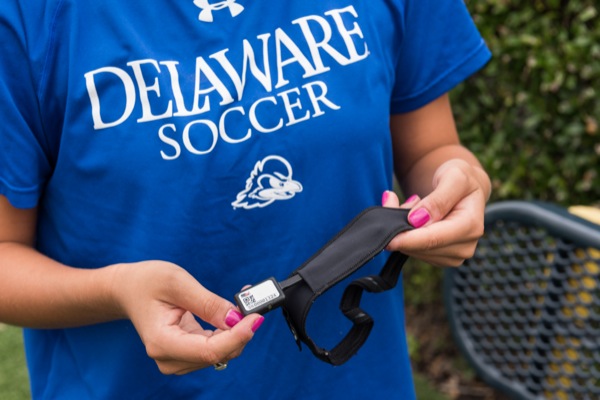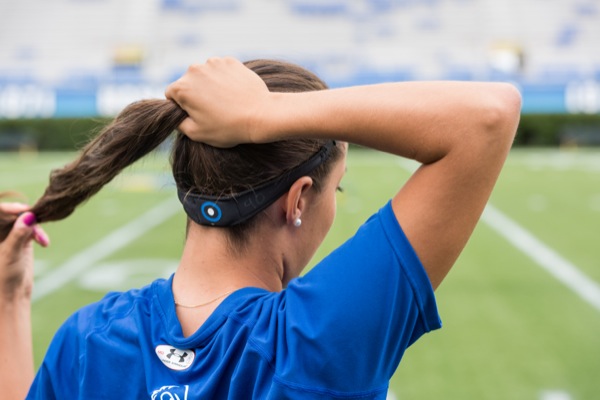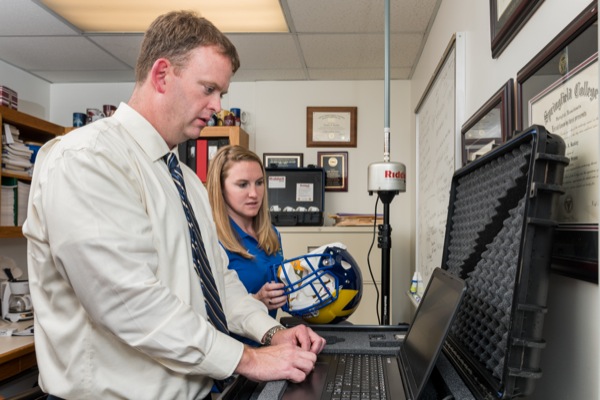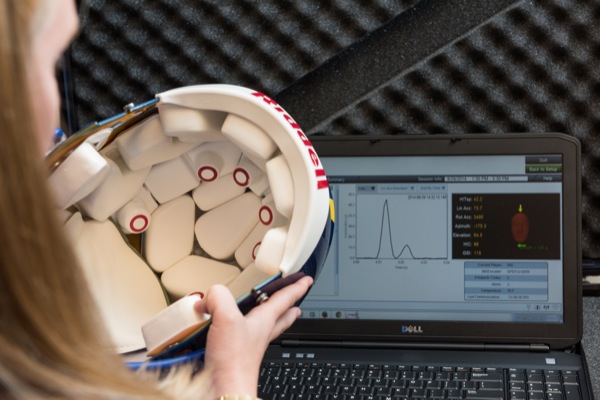

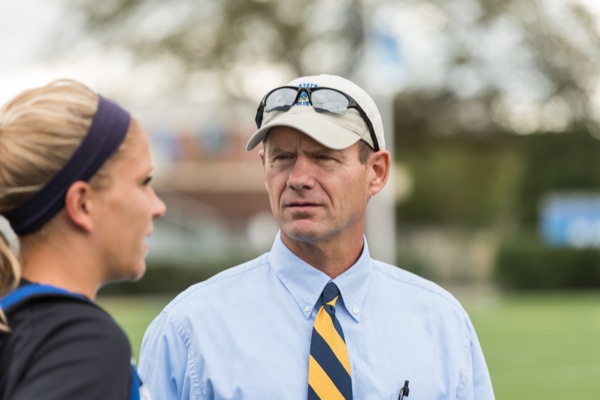
Brain game
Hens football, soccer teams contributing to research on concussion
8:54 a.m., Oct. 7, 2014--The death of Tennessee Titans player Rob Bironas in a car accident on Sept. 24 resulted in immediate media speculation that he had suffered from chronic traumatic encephalopathy (CTE), a degenerative disease that can occur in people who have experienced repeated blows to the head.
The only problem with that theory? Bironas was a place kicker and not involved in contact play, and a subsequent toxicology report showed a blood alcohol level of 0.218 percent.
Research Stories
Chronic wounds
Prof. Heck's legacy
“The media are way out in front of the science right now,” says Thomas Buckley, assistant professor in the Department of Kinesiology and Applied Physiology at the University of Delaware. “We’ve heard so much about CTE and concussion that people are jumping to conclusions without evidence.”
Buckley and Tom Kaminski, who directs UD’s Athletic Training Education Program, are both in hot pursuit of the scientific evidence needed to shed light on this emerging area of athletics research.
With support from the National Institutes of Health, Buckley is tracking impacts to the head among 21 UD football players using a software system known as HITS (Helmet Impact Telemetry System). HITS employs battery-powered sensors in helmet padding to detect the magnitude, duration, location, and direction of impacts and sends this information to a computer that records the data.
Kaminski is partnering with Stamford, Connecticut–based Triax Technologies to collect data from the UD women’s soccer team using narrow headbands outfitted with nickel-sized sensor packs.
“It’s really eye opening to see how often we’re heading the ball and the impact it has,” says player Emily Market. “Simply wearing the headbands during practice and games is such an easy thing to do to gather such meaningful results.”
Teammate Allegra Gray agrees. “We’ve always wondered what the short- and long-term effects of heading the ball are, and now we are one step closer to finding out,” she says. “This is really cutting-edge medicine, and we’re excited to see what the results mean for the sport of women's soccer.”
Buckley explains that the average concussion occurs at about 100 G’s, which is similar to what you would experience riding in a car that hits an immovable object at 25 to 30 miles an hour. “But we don’t really know how accurate that is,” he says. “Some people evidence symptoms of concussion with much less impact, while others may suffer little effect with a bigger hit.”
Players on some youth and high school teams across the country have begun wearing devices that give off signals when a hit at or above that threshold is sustained.
“This is fine as a starting point, but the actual diagnosis needs to be made by a skilled health care professional like a physician or an athletic trainer on the sidelines,” Buckley says.
Although Kaminski has been collecting data on high school and collegiate soccer players for more than a decade, he agrees with Buckley about the need for more quantitative data to move the science forward.
“When we started working with Triax a few years ago, their equipment was able to measure only linear acceleration,” he says. “The new devices our soccer players are wearing can measure rotational acceleration as well, which we know is a factor in concussion.”
“We’re now getting real-time feedback about not only hits taken from headers but also unintentional hits as well as impacts to goalkeepers who land on the ground to deflect shots,” he adds.
Both researchers are hopeful that the data they’re collecting will provide answers to questions about sports-related concussion and its long-term and cumulative effects.
“It’s good that the issue is getting media attention,” says Kaminski, who was instrumental in getting a high school concussion law passed in Delaware three years ago. “But we need to tame the frenzy with facts rather than feeding it with fear.”
Article by Diane Kukich
Photos by Evan Krape




